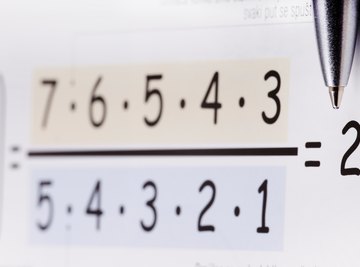
Dividends and divisors are the two key ingredients that yield the quotient, or answer, to a division problem. The dividend is the number being divided, while the divisor is the number by which the dividend is divided. In other words, given a÷b, a is the dividend and b is the divisor.
Different Notations
The location of the divisor and the dividend change slightly depending on what division notation is being used. When using the short-hand symbols “÷” or “/” to indicate division, the dividend appears to the left and the divisor appears to the right. For example, given the problem 21/7, you would identify the numerator, 21, as the dividend and denominator, 7, as the divisor. If the math problem incorporates the long division bracket, however, the dividend and divisor switch locations. The divisor is the number appearing to the left, or outside, of the division bracket, while the dividend appears to the right, or underneath, the division bracket.
References
About the Author
Teresa J. Siskin has been a researcher, writer and editor since 2009. She holds a doctorate in art history.
Photo Credits
Jevtic/iStock/Getty Images
